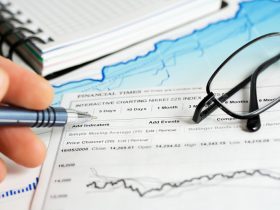By Howard Schneider and Ann Saphir
DALLAS (Reuters) -Top ranking Federal Reserve officials indicated Monday that rising yields on long-term U.S. Treasury bonds, which directly influence financing costs for households and businesses, could steer the Fed from further increases in its short-term policy rate and substitute the work done by financial markets for formal monetary policy moves by the central bank.
“We are in a sensitive period of risk management, where we have to balance the risk of not having tightened enough, against the risk of policy being too restrictive,” Fed Vice Chair Philip Jefferson said, nodding to the rise in U.S. Treasury yields and the need for the central bank to “proceed carefully” with any further increases in the benchmark federal funds rate.
“I will remain cognizant of the tightening in financial conditions through higher bond yields and will keep that in mind as I assess the future path of policy,” Jefferson said in remarks to the National Association for Business Economics.
The remarks by Jefferson and earlier by Dallas Fed president Lorie Logan, one of the Fed system’s more influential voices on financial markets, caused investors to undercut the likelihood of further Fed rate increases.
Even though policymakers in a set of projections issued last month said one more increase in the benchmark federal funds rate is likely needed this year, the CME Group’s (NASDAQ:) FedWatch showed the estimated chance of a rate hike at the Fed’s upcoming meeting plummet from around 27% at the start of the day to around 14% after the two officials spoke. The chance of a rate increase at the December meeting fell from around 36% to 24%.
“We are getting more and more signals from the different policymakers that the Fed is essentially done with its tightening cycle if conditions remain as tight as they are on the financial front, and if we continue to see the types of slowdown in terms of economic activity that are implicit from this tightening of financial conditions and this tightening of monetary policy,” said E-Y Parthenon’s Gregory Daco, one of the economists in the room where both Jefferson and Logan spoke.
In earlier remarks at the NABE event Logan, former head of the markets team at the New York Fed, said the higher returns being demanded by investors to hold long-term U.S. government debt could offset the need for further increases in the Fed’s policy interest rate.
“If long-term interest rates remain elevated because of higher term premiums, there may be less need to raise the fed funds rate,” said Logan, who has been among the more hawkish officials in supporting the need for continued rate increases.
Though neither policymaker declared the fight against high inflation over – indeed each cited risks that could lead the Fed towards more restrictive policy – their remarks were the most definitive accounting yet of how a recent surge in U.S. Treasury yields is being viewed at the Fed.
The Fed next meets on Oct. 31–Nov. 1, and data between now and then, including a report Thursday on consumer prices, could still influence the outcome. The outbreak of violence in Israel could also shift global sentiment about the economy, adding another set of risks into the Fed’s analysis.
S&P Global Market Intelligence’s Chris Varvares took Jefferson’s remarks, in fact, to suggest the Fed “likely has more work to do” to tame inflation, with data in the meantime likely showing the economy growing faster than expected and the Fed’s policy rate again increased in December.
Since the Fed last raised its policy interest rate a quarter of a percentage point in July, long-term bond yields have risen a full percentage point, a fast rate of change for a massive market.
Analysts have attributed the rise to a number of factors, and both Jefferson and Logan noted that the details of why yields have been rising will be important in determining the implications for monetary policy — even if there is uncertainty around any such “decomposition” of the recent increase.
Jefferson noted, for example, that the rise could be driven by investors coming to grips with the fact that the Fed may need to keep its short-term policy rate high for a longer period than expected because of the economy’s strength — a possibility that means markets are still just responding to the central bank.
But the moves have seemed larger than could be explained by perceptions of Fed policy alone, and Logan said that perhaps half of the recent rise in yields could be investors demanding more to lock up their money for longer periods of time.
A rise in the so-called “term premium,” if it proves persistent, could put an enduring drag on the economy and perhaps give the Fed less reason to raise its own policy rate.
Though increases in the Fed’s short-term rate are ultimately designed to move market-based borrowing costs higher, slowing the demand for goods and services and lowering inflation, the Fed does not want the process to get out of hand and do unnecessary damage to the economy.
Read the full article here













Leave a Reply